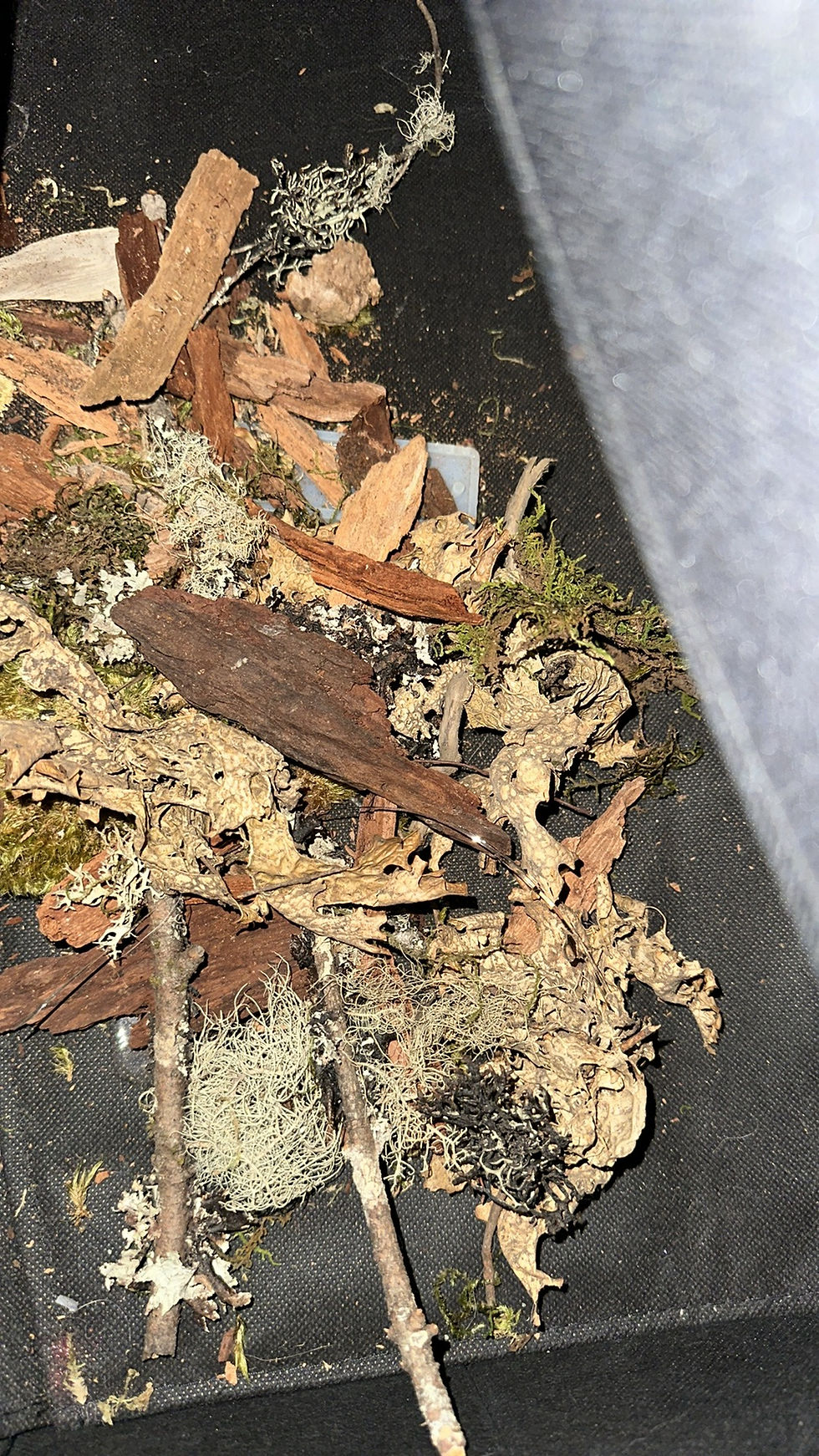How to Create a Perfectly Translucent Epoxy Resin River Table: A Step-by-Step Guide
- Preserving Nature Crafts

- May 19, 2023
- 4 min read
Updated: Jun 21, 2023
Epoxy resin river tables are a popular choice among furniture enthusiasts for their unique and stunning appearance. They consist of a wooden slab with a hollow space in the middle or in various spaces depending on the type of wood you use. The spaces are filled with clear epoxy resin, creating the look of a flowing river. The process of creating an epoxy resin river table can be tricky, but with some patience and attention to detail, you can achieve a perfect translucent finish that will showcase everything you encase in the epoxy resin. In this step-by-step blog, we will guide you through the process of layering epoxy resin for a flawless finish.

Materials you will need:
Wooden slab
Epoxy resin
Table mold
Measuring Mixing cups
Stir sticks (preferably silicone)
Blowtorch or heat gun (I use both)
Sander
Sandpaper (80-grit, 120-grit, 220-grit, 320-grit, and 400-grit and up to 10,000 grit)
Plastic sheeting or drop cloth
Chemical resistant gloves
Eye protection
Step 1: Preparation Before you start layering your resin river table
You need to prepare your wooden slab. First, use a router or chisel to carve out a hollow space in the middle of the slab where you will pour the epoxy resin. Make sure the edges are clean and even. Next, sand the entire slab with 80-grit sandpaper to remove any bumps or rough spots. Then, use a clean cloth to wipe down the entire surface to remove any dust or debris. I prefer to use rubbing alcohol when cleaning any of the wood and epoxy resin layers.
Step 2: Make sure your wood fits nicely in the mold
Measure the dimensions of the mold then cut the wood slab to match the size of the mold. Use a sander to smooth down the edges and surfaces of the wood slab for a clean finish. This way, the wood slab will fit snugly and look great within the table mold, resulting in a beautiful river table. Don't forget to clean the mold after you've put the wood slab in the mold to make sure you don't get any wood debris floaties.
Step 3: Mix the epoxy resin

Follow the manufacturer's instructions to mix the epoxy resin. For more in depth instructions read our blog How to Mix Epoxy Resin. Make sure you measure the resin and hardener precisely to get the right ratio. Stir the mixture thoroughly for at least five minutes until it is completely blended. The type of resin you use will depend on how deep you want your table. I prefer to use the two inch deep epoxy resins. Remember some epoxy resins need to be measured by volume while others are by weight.
Step 4: Pour the first layer
This step is one of the best parts of making river tables. Pour a thin layer of epoxy resin into the hollow space. Use a stir stick to spread it evenly across the surface. Use a blowtorch or heat gun to remove any air bubbles that may have formed on the surface. Let it cure for the recommended time but also come back every so often to pop more of those pesky bubbles.
Step 5: Sand the first layer
Once the first layer is cured, use 250 grit sandpaper to sand the surface gently. I like to use a palm sander for any sanding. This will create a texture that will help the next layer adhere better. Wipe down the surface with a clean cloth and sprits some alcohol to remove any dust.
Step 6: Pour the second layer

Mix another batch of epoxy resin and pour it into the hollow space, making sure to cover the entire surface. Use a stir stick to spread it evenly across the surface and watch those colours pop right out as the resin hits the cloudy first layer.
Use a blowtorch or heat gun to remove any air bubbles that may have formed on the surface. Let it cure for the recommended time. Remember you will have to keep coming back to pop more bubbles as it cures.
Step 7: Sand the second layer Repeat step 5 with 250-grit sandpaper
Make sure you sand the surface evenly and gently. Wipe down the surface with a clean cloth to remove any dust. I prefer to use rubbing alcohol.
Step 8: Repeat the process
Repeat steps 6 and 7 until you achieve the desired thickness. The number of layers you need will depend on the thickness of the slab and the depth of the hollow space.
Step 9: Final sanding
Once you have achieved the desired thickness, sand the surface with 320-grit sandpaper to remove any imperfections or scratches. Finish with 10,000-grit sandpaper to create a smooth surface.
Step 10: Finish
Clean the surface thoroughly with a clean cloth to remove any dust or debris.
Apply a final coat of epoxy resin to give the table a glossy and durable finish. Follow the manufacturer's instructions for the final coat and let it cure for the recommended time. For a final coat you will only need a coating epoxy resin which is usually mixed half and half. It's a little thicker so be sure to give yourself extra mixing time.
Your epoxy resin river table is now complete and ready to be admired!








Comentarios